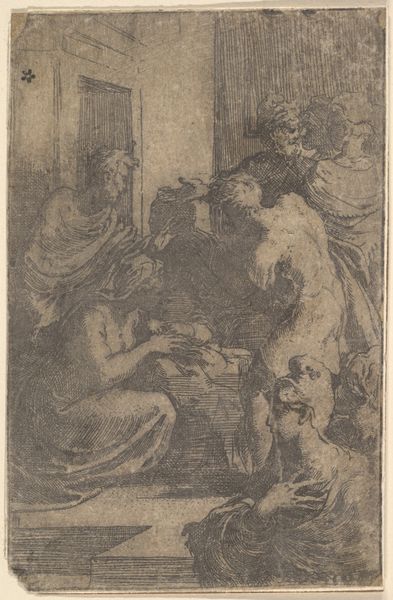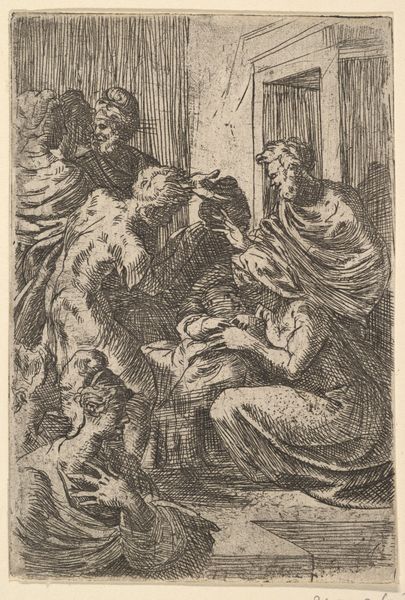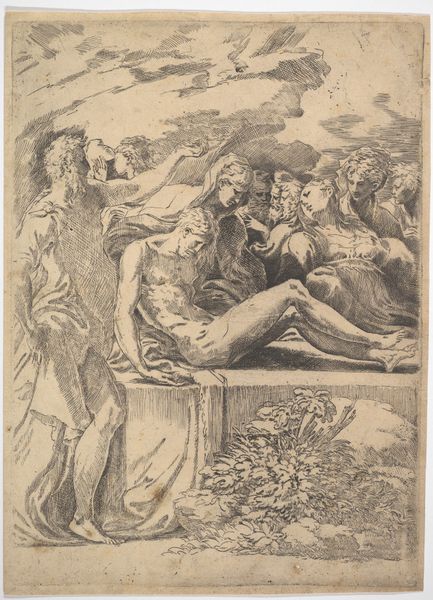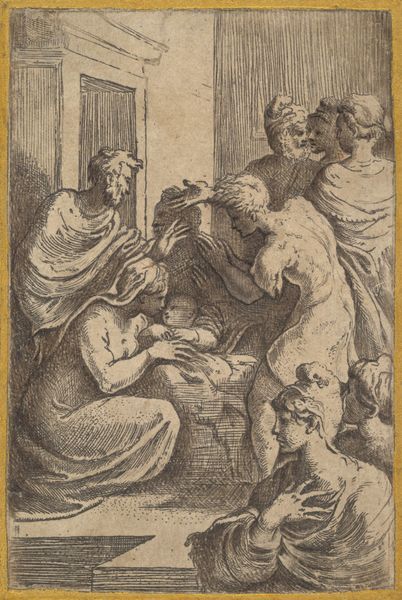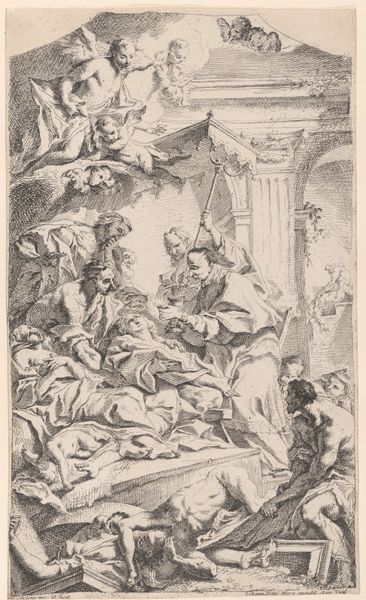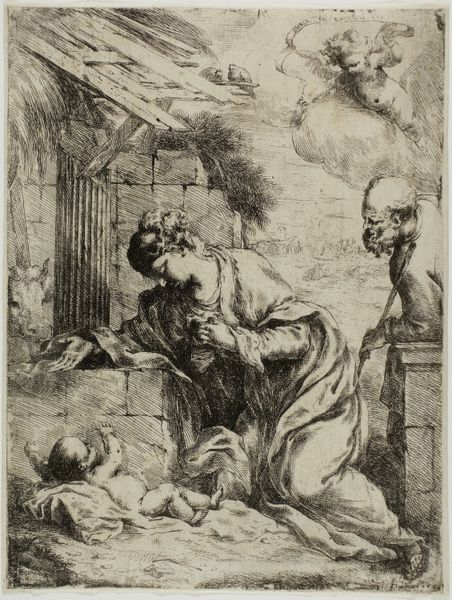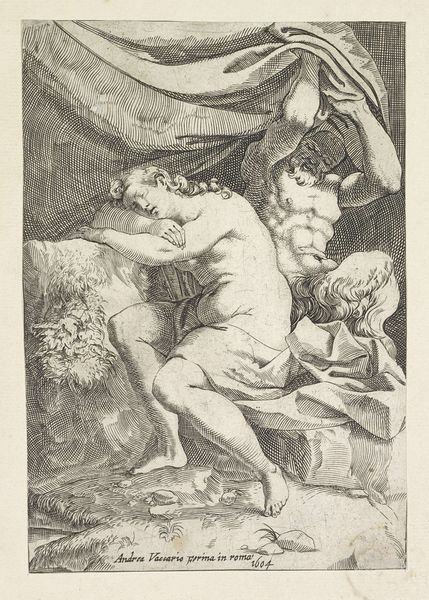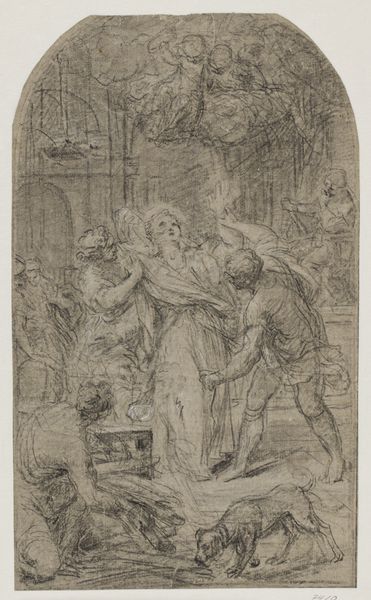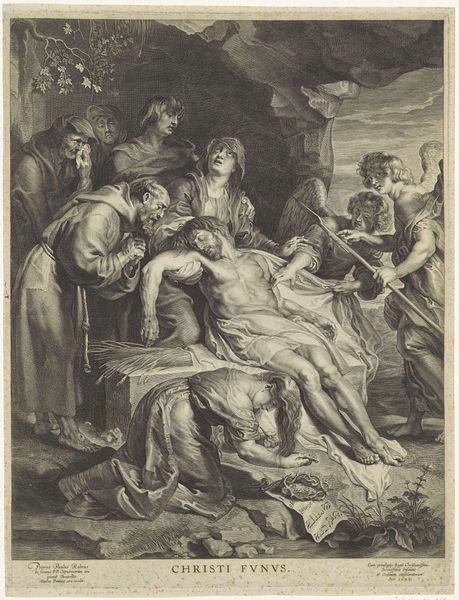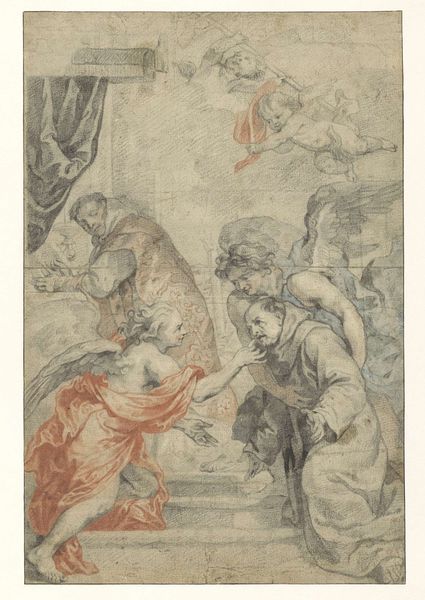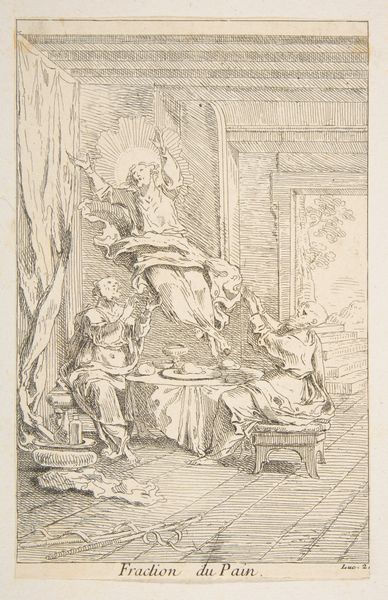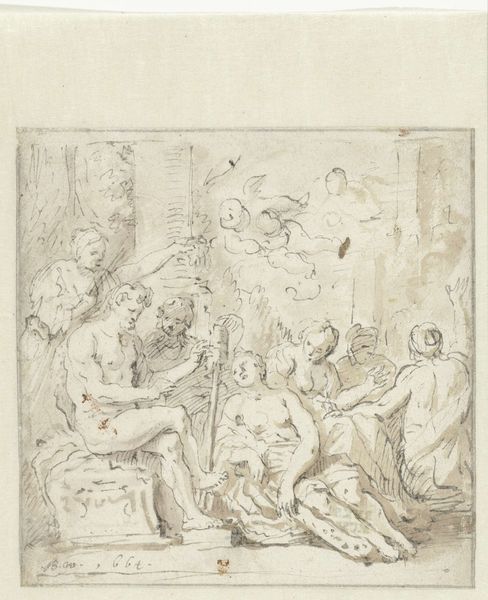
print, etching
# print
#
etching
#
mannerism
#
figuration
#
history-painting
#
italian-renaissance
Dimensions: height 120 mm, width 78 mm
Copyright: Rijks Museum: Open Domain
Editor: This is Parmigianino's "Adoration of the Shepherds," an etching from somewhere between 1524 and 1540. It's small, but the composition is dense. It's incredible to think about the labor involved in creating all these intricate lines, and how prints made art more accessible. What strikes you most about it? Curator: I am drawn to the material process that underlies the final image we see. Think about the physicality of etching—the biting of acid into the metal plate, the repetitive gestures required to create lines and textures. The choice of printmaking itself speaks volumes about distribution, and a wider, possibly less affluent, consumption of art beyond the typical patronage networks. How does the reproducible nature of this etching shift its value in comparison to a unique painting, say, made at the same time? Editor: That's a great question. It feels like a democratizing move, potentially taking religious narratives to more people than could have afforded a painting. Is there a trade-off? Was the original intent more religious, artistic, or even economic? Curator: It’s all those things and more! Mannerism loved artifice and display, which fits the social context when you understand how value was created then through the spread of images, but it all rests on a master craftsman’s labour, the cost of the materials, and the technologies available to printmakers at that time. Consider the availability of paper, the skills needed to mix the acid for the etching…these shaped what Parmigianino was able to create, how it was circulated, and who ultimately saw it. The economic forces behind these materials and processes are critical to understanding the object itself. Editor: I never considered it that way before. Thinking about the means of production definitely adds another dimension to my understanding of it! Curator: Exactly! We can also begin to view a piece through a lens of the labour behind the artwork and that changes the way we look at the image as well.
Comments
No comments
Be the first to comment and join the conversation on the ultimate creative platform.
